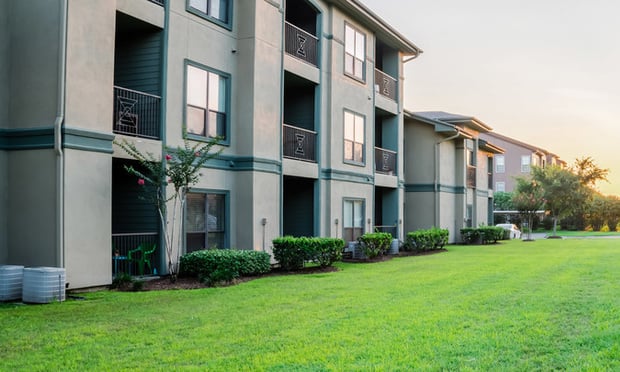Greg Willett, vice president of research and analysis for Carrollton, TX-based M/PF YieldStar, told a roomful of industry leaders yesterday that he doesn't foresee any trouble spots in Texas or many parts of the US. Phoenix, though, is a far different story. "In our perspective that's the market that's going to be struggling the most for the next couple years," he said.
Willett admitted that not all analysts are on the same page in their outlooks for this year and 2009. But in Willett's estimation, the overall multifamily sector is on track to at least maintain performance levels from last year unless the US economy goes into complete meltdown. The US occupancy was 95.2% at the 2007 close. In Dallas/Fort Worth, it was 94.1%. Rent growth was 3.5% nationwide; 4% in D/FW.
Willett, like others in 2007, had been concerned about the impact of the shadow market. But to analysts' surprise, demand surged in the last half of the year in many metros. He said renters appeared to be shying away from leasing single-family homes and sticking to apartments. Admittedly, it's statistically hard to monitor. "But, it's really that consumer choice that's making the difference now," he said. "Regardless of how you price it, if people don't want it, it's just going to sit there."
Willett predicted alternative rental choices won't have much impact again this year. Prospective homebuyers are waiting for the bottom of the market "and we're not anywhere near there yet," he said. "I don't believe losing people to homes isn't anything we have to worry about for the next year or so."
Willett pointed out that the stats support his verdict. Some of the biggest shadow markets of South Florida, Atlanta and Boston pulled ahead in fourth quarter 2007, with demand levels that warranted slots as the nation's Top Five leaders along with Houston and Los Angeles. "This may be the first sign of an important pattern," he said. "If people are afraid to rent unstable shadow market product, near-term apartment demand in spots like this could well surpass previous expectations."
Willett said the first half of this year will be the telling factor as shadow renters from early 2007 face renewal decisions. "If significant numbers come back to traditional apartments, overall demand could really be strong," he said. Pent-up demand by first-time homebuyers is the unknown in the equation, particularly in Texas where the economy hasn't cratered nor is expected to do so.
M/PF monitors fundamentals in 57 metros and is planning to add more this year for its quarterly and yearend surveys. In 2007, the Top 10 markets for demand, in order, were Houston, Dallas/Fort Worth, Boston, San Antonio, Washington, DC, San Diego, Denver, Riverside, CA, Atlanta and Raleigh, NC.
Willett believes the Top 10 markets for 2008-09 will be San Francisco, Salt Lake City, Oakland, CA, Nashville, Portland, OR, Seattle, San Jose, Philadelphia, Richmond, VA and Austin.
And Willett is betting that the nation's bottom 10 for 2008-09, in declining order, will be Atlanta, West Palm Beach, FL, Detroit, Las Vegas, Dayton, OH, Greensboro, NC, Tampa, Memphis, Jacksonville, FL and Phoenix.
Want to continue reading?
Become a Free ALM Digital Reader.
Once you are an ALM Digital Member, you’ll receive:
- Breaking commercial real estate news and analysis, on-site and via our newsletters and custom alerts
- Educational webcasts, white papers, and ebooks from industry thought leaders
- Critical coverage of the property casualty insurance and financial advisory markets on our other ALM sites, PropertyCasualty360 and ThinkAdvisor
Already have an account? Sign In Now
*May exclude premium content© 2024 ALM Global, LLC, All Rights Reserved. Request academic re-use from www.copyright.com. All other uses, submit a request to [email protected]. For more information visit Asset & Logo Licensing.








